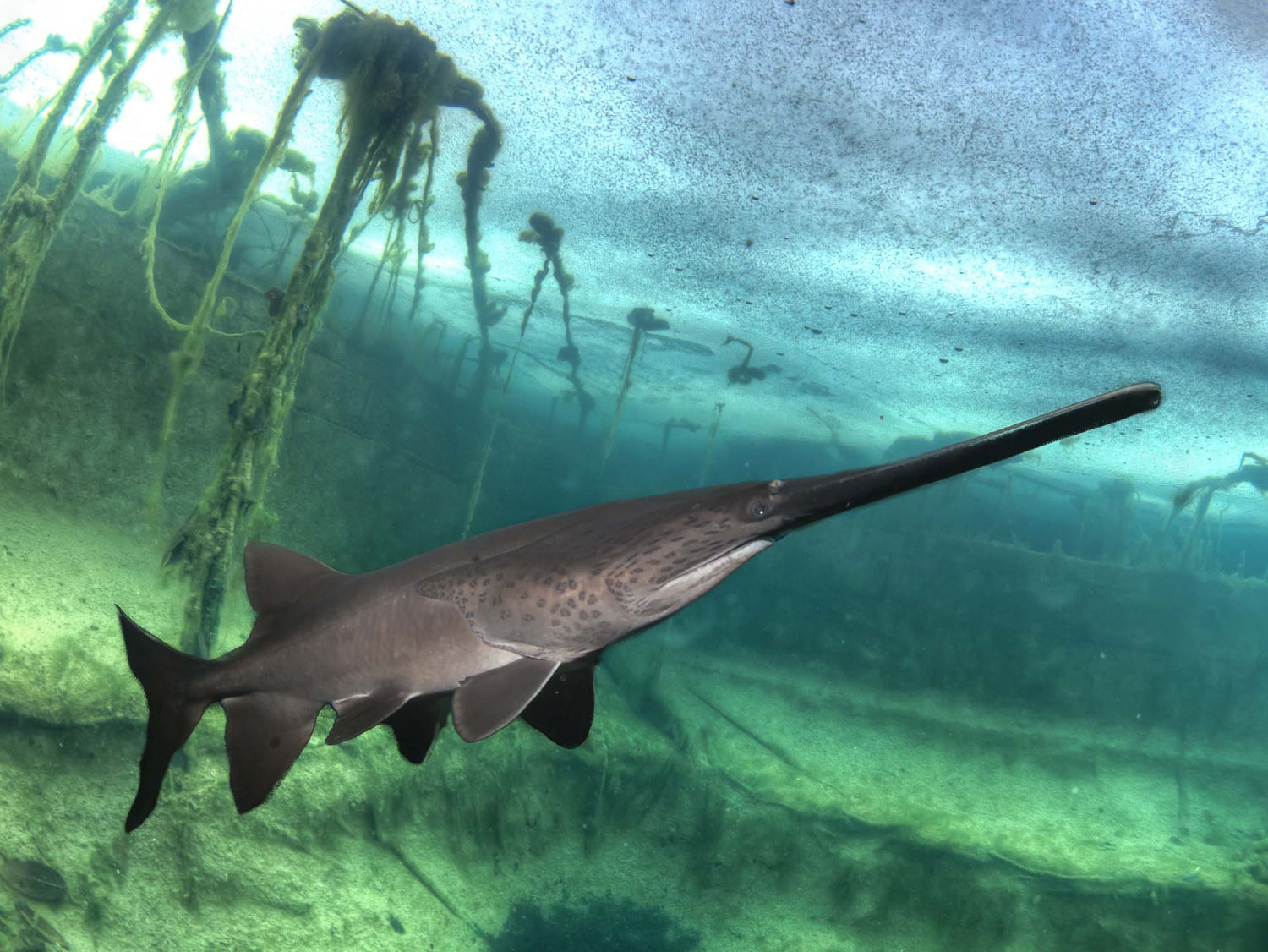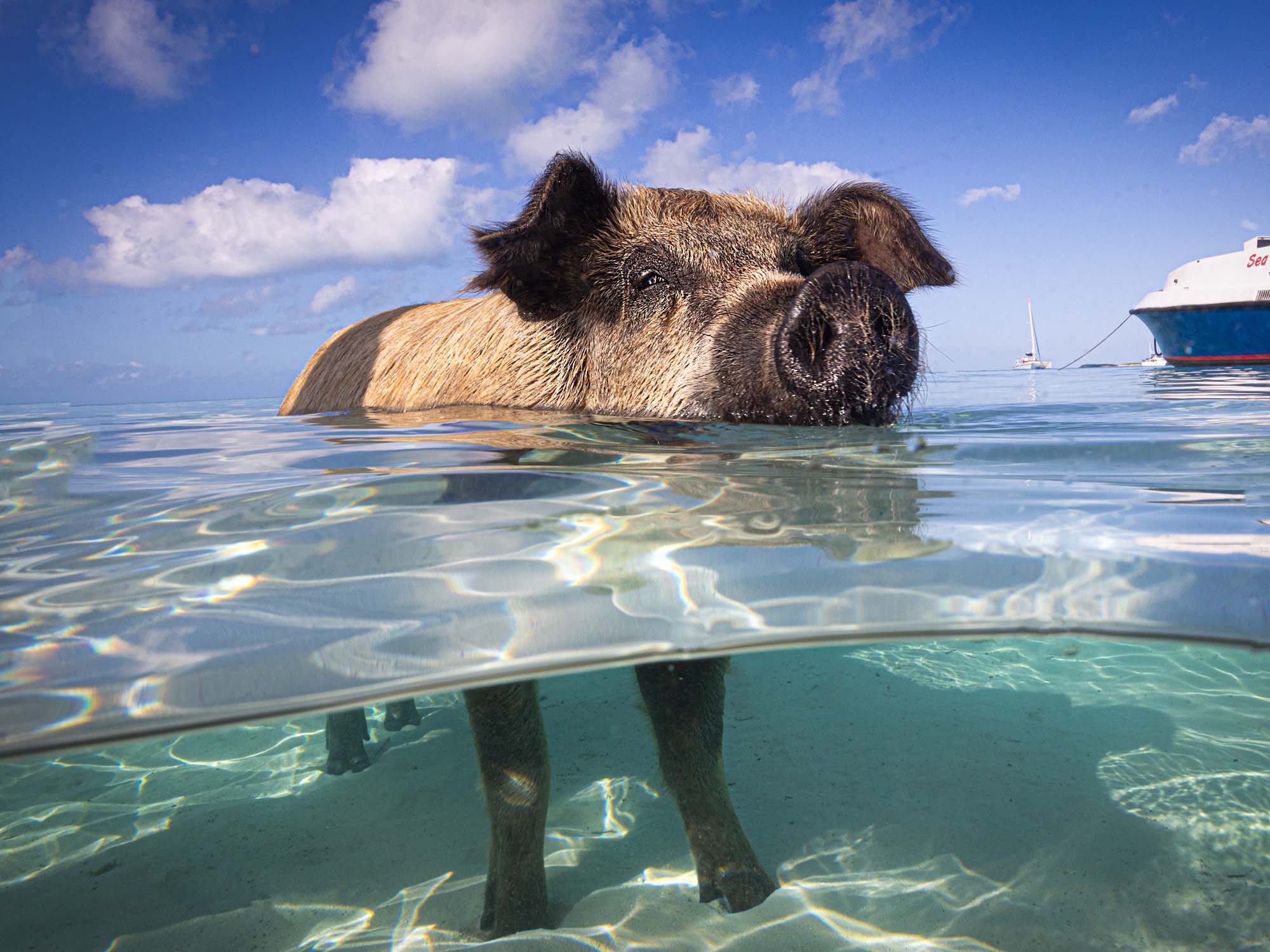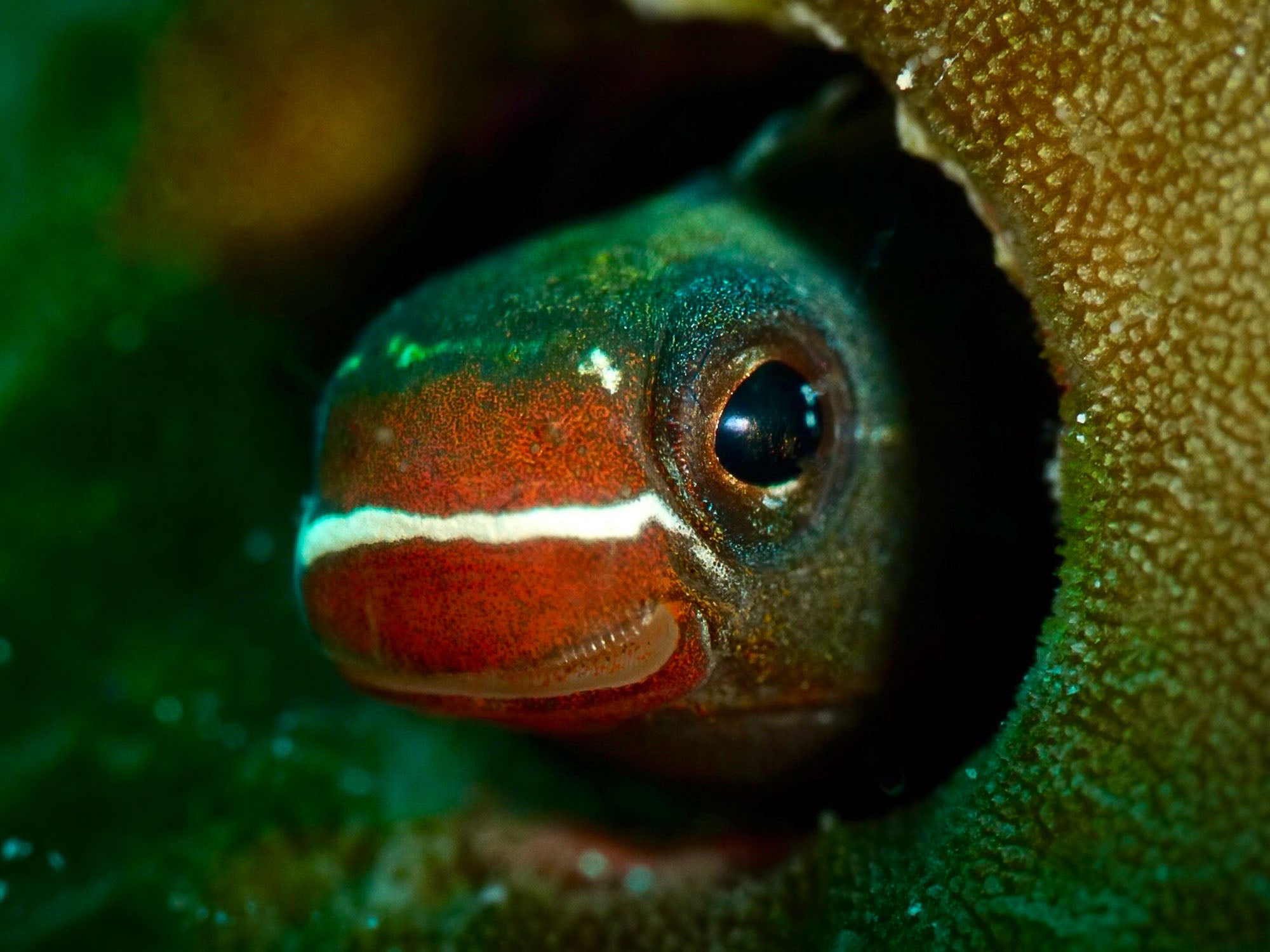American paddlefish are native to the rivers throughout the Mississippi River basin from southern New York to Montana and as far south as Louisiana. The last living species of Paddlefish, they are a primitive group of ray-finned fish related to sturgeon. Most of their habitat is too cloudy for photography. But, there are exceptions: American paddlefish have been introduced into lakes and quarries to entertain divers and also for their valuable caviar, said to be tastier than sturgeon caviar.
DSLR + Mirrorless
Mode: Manual for camera, set strobes to TTL. If you are not using a flash, then Program, or Aperture and Shutter Priority will work.
ISO: 200-2000 depending on the depth you find them at, and the clarity of the water. Although they are shy to bright sun, most of their feeding is done near the surface where they filter plankton as they swim.
Aperture: F-8 to F-16, the depth of field from a small aperture will come in handy.
Shutter Speed: 1/125-1/160 flash synch. These animals move slowly through the water, so these speeds will stop their motion with or without flash.
Lens: 8mm to 28mm. As long as you can get close, any focal length is worth using here. Ideally you will shoot them from just a couple feet away, and since they can grow to 5 feet (1.5m) in length a wide lens works well.

Paddlefish flare their mouths to eat. You may have to be patient to catch this action but it's worth it for the final shot. 1/80 • f/5.6 • ISO 400. © Steve Miller
Point + Shoot
Mode: Manual or Aperture Priority. If you are shooting natural light, Program will work as well. A focus light or dive light will also help here.
ISO: 400 to 2000. If you have no light or strobe you may need to raise the ISO, particularly on cloudy days or in the rain.
Aperture: F-8 will give you depth of field, and probably be the preferred Aperture for most point and shoot cameras.
Shutter Speed: 1/60th to 1/200 is plenty fast to stop the action.
Lens: Since we can shoot at super close distances the wider the lens the better but any focal length can work, even macro for a face shot. These animals can be very large, so a wide lens works well.
Technique
Finding paddlefish in clear water is the first trick. Quarries or a natural pool are the only places I have seen them. It is possible to train them to take fish chow or you can wait until they are feeding near the surface on tiny insects. Most of these images were taken with the camera attached to a pole with remote shooting to get close to them (see pro-tip below for more).
Strobes
The skin of paddlefish is dark grey with some copper colored patterning, they are not overly reflective. If you are able to get some natural light (or can light from above at night) then you may like lighting them from below to show the detail.

The profile of these unique looking creatures can make for some interesting compositions. A wide lens can help you capture the entirety of their large frames. 1/80 • f/2.8 • ISO 100. © Steve Miller
Pro-tips
Paddlefish are beautiful to watch swim, but they become even more interesting when they flare their mouth open to feed. This does not happen all of the time so you will have to wait for it. Once they are feeding, you will notice they turn upside down to take things from the surface. This is because most of their feeding is sub-surface, even if only slightly, making them look clumsy. When they feed naturally on plankton they will remind you of basking sharks or some of the whales that filter plankton. A technique used on many of these images involves attaching foam to your housing until it floats as you like, if part of the housing or dome is sticking out of the water then you should be able to control your camera remotely and wirelessly using a camera app like Canon Connect.
Additional Reading
Freshwater Underwater Camera Settings and Technique
Close Focus Wide Angle In Depth
What's in My Gear Bag // Steve Miller 2023 [VIDEO]
Never Take Your Camera Out of the Housing! // USB-C Charging & Data Transfer Bulkhead [VIDEO]













